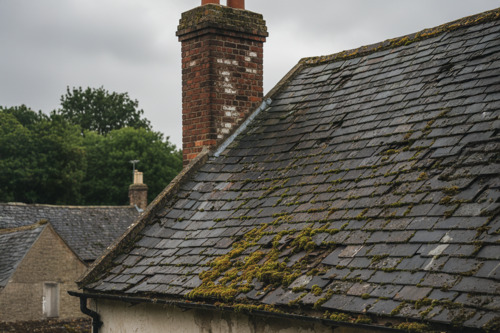- About Us
- Services
- Blog
- Contact
Need a quote?
Roofs are built to last, but even the sturdiest materials deteriorate over time. For London homeowners, ageing roofs can pose hidden risks that go beyond mere leaks or cosmetic issues.
Understanding these dangers is crucial to protecting your home, your family, and your investment.




One of the most serious risks of an old roof is structural weakness.
Timber supports can rot, nails can corrode, and tiles can become brittle. Even minor damage, if left unaddressed, can compromise the roof’s integrity, increasing the risk of collapse or significant repair costs.
Regular roof inspections are key to spotting early signs of structural problems.
Old roofs are more susceptible to leaks, which can lead to water damage inside your home. Water ingress may cause ceilings to stain, plaster to crumble, and wooden structures to warp.
Persistent damp also creates an ideal environment for mould and mildew, which can trigger respiratory problems and affect overall indoor air quality.
Moss and algae are common on London roofs, especially in shaded or damp areas. While they may appear harmless, these growths retain moisture against the tiles, accelerating wear and increasing the risk of leaks. In severe cases, vegetation can lift tiles or create gaps, allowing water to penetrate the roof structure.
An old roof can also hide energy inefficiencies. Gaps, cracks, or degraded insulation increase heat loss in winter and reduce cooling efficiency in summer. This not only raises energy bills but also puts extra strain on your heating and cooling systems. Replacing or upgrading an ageing roof can dramatically improve energy efficiency.
It depends on the construction, but the minimum weight a flat roof must be capable of bearing is 300lbs. This refers to a concentrated weight where a load is positioned on just one area of the roof. So, for example, a commercial flat roof can approximately support a 300lb HVAC unit in a 2.5×2.5ft single space.
Over time, damaged or unmaintained roofs can become entry points for pests such as birds, squirrels, or insects. These intruders can cause further damage, contaminate insulation, and even create fire hazards by nesting near electrical components.
If your roof is over 20 years old, shows visible signs of damage, or has caused recurring issues indoors, it’s time to consult a professional roofer. They can assess the roof’s condition, identify hidden dangers, and advise whether repairs or full replacement are necessary.
Ignoring the risks of an ageing roof can lead to expensive repairs and even compromise your safety.
Regular roof inspections, timely maintenance, and professional assessments ensure your home remains secure, energy-efficient, and free from the hidden hazards that old roofs often conceal.


